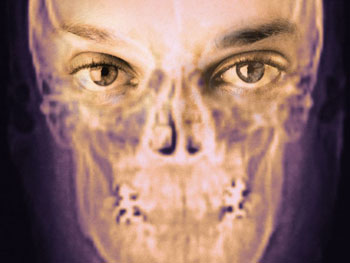Nerve Transposition Reanimates Paralyzed Face
By HospiMedica International staff writers
Posted on 05 Jul 2016
Mobilization and transposition of the intratemporal segment of the facial nerve can restore facial tone and symmetry, according to a new study.Posted on 05 Jul 2016
Researchers at the University of California Los Angeles (UCLA; USA) and Johns Hopkins University (JHU, Baltimore, MD, USA) conducted a case series study involving 20 patients with facial paralysis who underwent transposition of the intratemporal facial nerve for end-to-side coaptation to the hypoglossal nerve (known as the VII to XII technique) for facial reanimation. The main outcome measures included paralysis duration, facial tone and symmetry at rest and with smile, oral commissure excursion, post-reanimation volitional smile, and synkinesis.

Image: According to new research, nerve transposition can restore facial tone and symmetry in patients with facial paralysis (Photo courtesy of UCLA / JAMA).
The results showed that in 16 of the 17 patients available for follow-up there were improvements in facial symmetry at rest and during animation, with a median time for return of facial muscle tone of 7.3 months, instead of the median duration following facial paralysis of 11.4 months. There was a significant reduction in facial asymmetry and a significant increase in horizontal, vertical, overall lip excursion, and smile angle. None of the patients developed significant tongue atrophy, impaired tongue mobility, or dysfunction of speech or swallow. The study was published on June 23, 2016, in JAMA Facial Plastic Surgery.
“Mobilization of the intratemporal segment of the facial nerve provides adequate length for direct end-to-end coaptation to the hypoglossal nerve, and is effective in restoring facial tone and symmetry after facial paralysis,” concluded lead author Amit Kochhar, MD, of UCLA. “The resulting smile is symmetric or nearly symmetric in the majority of patients, with varying degree of dental show. The additional length provided by utilizing the intratemporal segment of the facial nerve reduces the deficits associated with complete hypoglossal division/splitting, and avoids the need for interposition grafts and multiple coaptation sites.”
The hypoglossal nerve is the twelfth cranial nerve, and innervates all extrinsic and intrinsic muscles of the tongue, except for the palatoglossus. It has long been an axonal source for reinnervation of facial nerve paralysis by hypoglossal-facial anastomosis. The procedure is considered the standard for reanimating the face when the proximal end of the facial nerve is not available, but the peripheral system is still viable.
Related Links:
University of California Los Angeles
Johns Hopkins University














